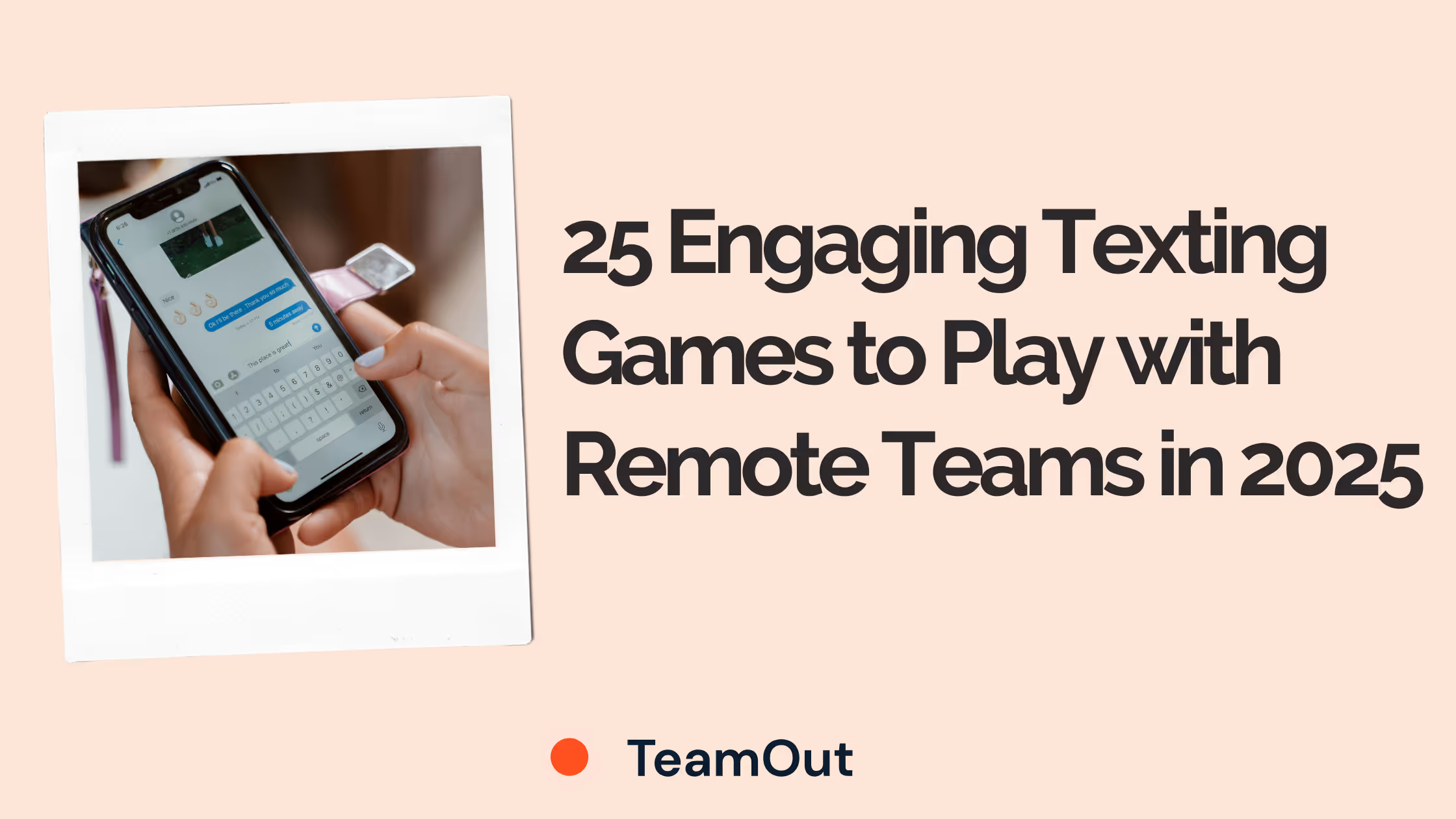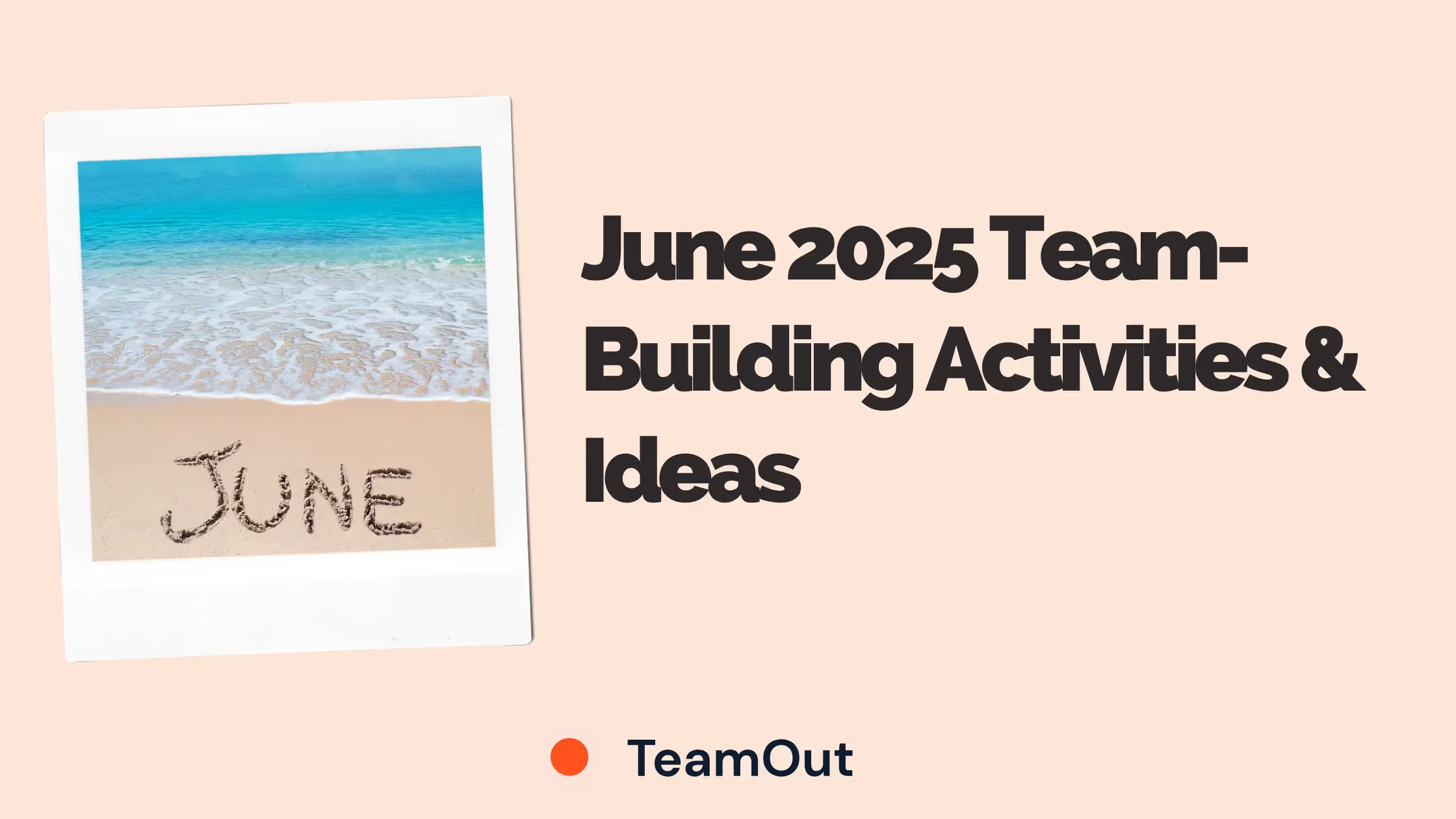Onboarding ROI and Business Impact
(Brandon Hall Group Research quoted by Forbes)
Organizations with comprehensive onboarding programs see dramatic improvements in employee retention, with the most effective programs reducing turnover by more than four-fifths. This statistic represents one of the strongest correlations between HR practices and measurable business outcomes.
Why This Matters: With average replacement costs ranging from 50-200% of an employee's annual salary, an 82% retention improvement translates to substantial cost savings and operational stability.
TeamOut Insight: Professional onboarding programs that combine structured processes with team-building experiences create the foundation for long-term employee commitment and success.
2. Strong Onboarding Processes Improve New Hire Productivity by Over 70%
(Brandon Hall Group Research)
Effective onboarding doesn't just help employees stay. Organizations with structured onboarding see productivity improvements that significantly exceed industry averages, with new hires contributing to business objectives much faster.
Why This Matters: Faster time-to-productivity means quicker return on hiring investments and reduced burden on existing team members who typically support new employees during transition periods.
TeamOut Insight: Combining traditional onboarding with immersive team experiences accelerates relationship building and cultural integration, key drivers of early productivity gains.
(SHRM Research quoted by The HuffPost)
Comprehensive onboarding represents a significant investment, with costs varying based on role complexity, industry requirements, and program comprehensiveness. This range includes direct costs and costs of time invested by HR teams and managers.
Why This Matters: Understanding true onboarding costs helps organizations budget appropriately and measure ROI more accurately, justifying investments in comprehensive programs.
TeamOut Insight: While onboarding costs are substantial, investments in professional programs and team-building experiences, including team-building suggestions for intern onboarding or icebreakers, can significantly outperform zero-budget approaches in retention and engagement metrics.
Employee Retention and Engagement
4. 69% of Employees Are More Likely to stay with a Company for Three Years If They Experience Great Onboarding
(Research by Deloitte)
The correlation between onboarding quality and long-term retention is remarkably strong, with more than two-thirds of employees making multi-year commitments based on their initial experience.
Why This Matters: Three-year retention represents significant value creation, as employees typically reach peak productivity and become valuable mentors and cultural ambassadors.
TeamOut Insight: Great onboarding combines process excellence with meaningful team connections, creating emotional investment that sustains long-term commitment.
(Bersin by Deloitte research)
The critical onboarding period has an outsized impact on retention decisions, with one-fifth of all employee departures occurring within the first six weeks of employment.
Why This Matters: Early turnover is particularly costly because organizations have invested in recruitment and initial training without receiving productive contributions, making prevention crucial for financial performance.
TeamOut Insight: Intensive support during the first 90 days, including team integration experiences, significantly reduces early departure risk and builds a foundation for long-term success.
6. 33% of Recruits Leave Their Jobs After Three Months
(Jobvite research quoted in Psychology Today)
One in three new hires doesn't make it past the initial quarter, highlighting the critical importance of sustained onboarding support beyond the first few weeks.
Why This Matters: Three-month turnover indicates systemic issues with role preparation, cultural fit, or support systems, requiring comprehensive onboarding solutions.
TeamOut Insight: Quarterly team experiences and ongoing integration activities help bridge the gap between initial onboarding and full team membership.
7. The Cost of Hiring a New Employee is around $4,000.
(Research by Glassdoor)
Hiring new employees is an expensive and time-consuming process. A comprehensive hiring process—including recruitment, interviews, and onboarding—can cost organizations approximately $4,000 per hire. This investment highlights why optimizing the onboarding experience is critical for maximizing return on hiring investments.
Why This Matters: Reducing turnover by improving onboarding processes saves significant costs and enhances workforce stability.
TeamOut Insight: Streamlining administrative procedures and leveraging digital tools during onboarding can help HR managers control costs while delivering a smooth experience for new hires.
8. Employees Who Clearly Understand How Their Company Works are 4.7 Times More Likely to Rate Their Onboarding as Excellent.
(Research by Gallup)
A formal onboarding process that communicates company culture and job duties strongly impacts how new employees perceive their onboarding. When hires understand the new organization’s functions and goals, they are far more likely to report a successful onboarding experience.
Why This Matters: Understanding the organizational environment fosters engagement, accelerates job readiness, and supports employee retention.
TeamOut Insight: Combining traditional onboarding with immersive team experiences and clear communication boosts new hire confidence and connection.
9. Employees with Better Onboarding Experience Are 2.6x More Likely to Feel Satisfied at Work
(Research by Gallup)
The correlation between onboarding quality and overall job satisfaction extends well beyond the initial period, with effects lasting throughout an employee's tenure.
Why This Matters: Job satisfaction drives engagement, productivity, and retention, making onboarding quality a predictor of long-term employee value and organizational performance.
TeamOut Insight: Satisfaction often stems from feeling welcomed and integrated into the team, outcomes that professional team experiences deliver more effectively than traditional orientations.
10. 81% of New Hires Report Feeling Overwhelmed with Information During Onboarding
(Glean's Onboarding Survey Report)
Information overload represents a common problem in onboarding design, with the vast majority of new employees struggling to process the volume of information presented during their initial period.
Why This Matters: Overwhelming new hires reduces learning effectiveness and creates negative associations with the organization, potentially impacting retention and productivity.
TeamOut Insight: Balanced onboarding that combines essential information with relationship-building experiences helps employees process and retain critical knowledge more effectively.
11. New Employees Take About 8 to 12 Months to Become as Efficient as Their Coworkers
(Academy to Innovate (AIHR) research)
Full productivity integration requires substantial time investment, with most employees needing nearly a year to reach the performance levels of established team members.
Why This Matters: Understanding the full timeline for productivity development helps organizations set realistic expectations and plan appropriate support throughout the integration period.
TeamOut Insight: Sustained team-building and relationship development throughout the first year accelerates the path to full productivity and team integration.
12. Workers who Felt Their Onboarding was Highly Effective are 18 Times More Likely to Feel Highly Committed to Their Organization
(Research by Deloitte)
Effective onboarding processes not only prepare employees for their job positions but also inspire a strong commitment to the organization. Employees reporting a successful onboarding experience demonstrate dramatically higher levels of dedication and motivation.
Why This Matters: Engagement during onboarding correlates closely with long-term retention and overall job satisfaction.
TeamOut Insight: Investing in an optimal onboarding experience that integrates career development paths can transform new hires into loyal contributors.
13. Among employees who rate their onboarding as exceptional, 77% believe their job meets or exceeds their expectations.
((Research by Gallup)
Employees who experience a successful onboarding process are significantly more likely to feel positively about their job position and overall experience. This early confidence impacts productivity and long-term satisfaction.
Why This Matters: A strong onboarding process creates alignment between expectations and reality, helping new hires settle into their roles faster.
TeamOut Insight: HR professionals and hiring managers should emphasize delivering a clear, engaging onboarding process that shapes positive new employer impressions.
14. Insufficient Onboarding Results in Attrition, with 63% of Workers Wanting to Leave their Job in 2 Years if They're not Thriving
(Glean's Onboarding Survey Report)
Poor onboarding experiences can severely affect retention. More than half of employees who do not thrive in their early months express a desire to leave their job within two years, highlighting the cost of ineffective onboarding.
Why This Matters: Organizations struggle with turnover that stems from inadequate support and unclear job descriptions during onboarding.
TeamOut Insight: Implementing a standard onboarding process combined with onboarding buddies and career path guidance helps reduce attrition and sustain engagement.
Industry Benchmarks and Comparisons
15. Only 12% of Employees Strongly Agree That Their Organization Does a Great Job of Onboarding New Employees
(Gallup Research)
This foundational statistic reveals a massive opportunity for improvement across organizations, with the vast majority of companies failing to deliver effective onboarding experiences.
Why This Matters: The low percentage of employees who rate their onboarding as excellent indicates widespread room for improvement and competitive advantage opportunities for organizations that invest in comprehensive programs.
TeamOut Insight: Organizations that prioritize professional onboarding experiences, including team-building components, can differentiate themselves significantly in talent attraction and retention.
16. Employees are 3.4 times more likely to feel their onboarding was successful when their manager actively participates in the process.
(Research by Gallup)
When hiring managers take an active role in the onboarding process, employees report a much more positive experience. Manager involvement helps new employees understand their job duties, the company culture, and build relationships, all key drivers of a successful onboarding experience.
Why This Matters: Managers are central to creating an effective onboarding process that increases employee engagement and retention, especially important for remote employees who may lack informal office interactions.
TeamOut Insight: HR professionals should equip managers with training and tools to lead onboarding, ensuring new hires feel supported and confident from day one.
17. Employee Turnover Can be as Much as 50% in the first 18 months of Employment for Senior External Hires
(Society for Human Resource Management (SHRM) quoted by Forbes)
Senior hires face a significant risk of turnover within their first 18 months, often due to gaps in the onboarding experience that fail to fully integrate them into company culture and expectations.
Why This Matters: Organizations struggle to retain critical talent without a formal onboarding process tailored to senior roles, resulting in costly turnovers.
TeamOut Insight: Investing in a good onboarding experience for external hires, including career growth and virtual onboarding options, can reduce early attrition dramatically.
18. Employee Turnover Can Reach 50% in the first 4 months for Hourly Workers
(Society for Human Resource Management (SHRM) quoted by Forbes)
Hourly workers are particularly vulnerable to early turnover, with half leaving within four months if onboarding and initial support are insufficient.
Why This Matters: Poor onboarding of frontline employees disrupts operations, impacting customer service and increasing recruitment costs.
TeamOut Insight: Automated onboarding processes and clear communication of job obligations improve engagement and help hourly workers feel valued from the start.
19. 61% of Employees Who Describe their Onboarding as Exceptional Report Feeling Fully Prepared to Excel in their New Positions.
(Research by Gallup)
A successful onboarding experience equips new employees with confidence and clarity about their role, enabling them to perform optimally and engage fully with the organization.
Why This Matters: Organizations fail when onboarding leaves employees underprepared, risking poor performance and early turnover.
TeamOut Insight: HR managers should design onboarding tasks that communicate expectations and company culture to build readiness in new employees.
20. Only 44% of Respondents Said Their Organizations’ Efforts to Onboard External Hires Achieved Desired Outcomes
(Research by the i4cp Survey quoted by Forbes)
Less than half of companies report success in onboarding external hires, signaling a widespread struggle to deliver high-quality onboarding for new talent entering the organization.
Why This Matters: Failure to onboard external hires properly leads to wasted hiring costs and lost productivity.
TeamOut Insight: Incorporating virtual onboarding tools and clear onboarding objectives can help HR professionals improve integration and retention.
21. 88% of Employees Say that Onboarding Programs Weren’t Offered to Workers Who’d Been Promoted or Transferred into New Jobs
(Research by the i4cp Survey quoted by Forbes)
Organizations often overlook the onboarding needs of internal hires, such as promoted or transferred employees, which can lead to disengagement and poor performance in their new roles.
Why This Matters: A successful onboarding experience isn’t just for new hires — it’s vital across job transitions to maintain employee engagement and productivity.
TeamOut Insight: HR managers should extend formal onboarding processes to all employees changing positions, with tailored onboarding tasks that support learning of new duties and organizational networks.
22. Only 20% of Companies Indicated that Helping New Hires Establish Organizational Networks is an Objective of their Onboarding Process.
(Research by the i4cp Survey quoted by Harvard Business Review)
Despite evidence that strong relationships support retention and engagement, few organizations prioritize building employee networks during onboarding.
Why This Matters: Organizations fail when new hires lack connections that facilitate collaboration and cultural integration.
TeamOut Insight: Incorporating onboarding buddies and social integration activities into the onboarding process creates a more supportive office environment and improves the overall employee experience.
23. 88% of Companies Could Improve Their Onboarding Program
(Research by Gallup)
The overwhelming majority of organizations acknowledge that their onboarding processes are not optimal, creating opportunities for strategic improvement and competitive advantage.
Why This Matters: Widespread recognition of onboarding deficiencies indicates market readiness for investment in improved programs and professional services.
TeamOut Insight: Companies that invest in comprehensive onboarding improvement, including team integration experiences, gain significant advantages in talent competition.
24. Only 29% of Employees Say They Feel Fully Prepared for Their New Role After Onboarding
(Research by Brandon Hall Group quoted by Forbes)
Most onboarding programs fail in their primary objective of preparing employees to succeed in their positions, indicating systematic issues with program design and execution.
Why This Matters: Inadequate role preparation leads to reduced productivity, increased stress, and higher turnover risk, making preparation quality a critical success factor.
TeamOut Insight: Comprehensive onboarding that includes team integration and mentorship components significantly improves role preparation and confidence levels.
25. Poor Onboarding Leads to an Increase of 42% in Manager Fatigue.
(Research by Gartner Manager Survey quoted by Deel)
Poor employee onboarding not only affects new hires but also significantly increases manager fatigue. When onboarding processes fail, managers must spend extra time addressing issues, leading to a 42% rise in fatigue levels and reducing their capacity to support teams effectively.
Why This Matters: Companies struggle with inefficient onboarding systems that strain managers, impacting overall team productivity and risking burnout.
TeamOut Insight: Streamlining employee onboarding can alleviate manager workloads, allowing them to focus on supporting hires rather than firefighting onboarding problems.
26. 28% of HR Leaders Have Started Using AI in Onboarding.
(Research by Deel)
Innovative ideas like AI are increasingly shaping the onboarding landscape, with 28% of HR leaders already adopting AI to automate onboarding tasks and personalize new hire experiences.
Why This Matters: As companies digitize their onboarding processes, AI helps reduce average onboarding costs and improves efficiency, making onboarding scalable for remote workers and large organizations.
TeamOut Insight: HR professionals who embrace AI-driven onboarding can deliver more consistent and engaging employee onboarding experiences while freeing up valuable time.
27. Among Remote Employees, 63% Feel that Their Training During the Onboarding Process was Inadequate.
(Research by AIHR)
A majority of remote workers report feeling undertrained during onboarding, highlighting a critical gap in virtual onboarding programs.
Why This Matters: Remote employees are more likely to disengage or quit if onboarding fails to adequately prepare them for their roles.
TeamOut Insight: Good practices of onboarding processes must address remote-specific challenges by including tailored virtual training and continuous support from the outset.
28. One out of Six New Hires Found the Onboarding Systems Not User-Friendly.
(Research by Super CIO quoted by Deel)
One in six hires struggle with onboarding systems that are difficult to navigate, which hampers their ability to complete onboarding tasks smoothly.
Why This Matters: Poor user experience in onboarding systems negatively impacts new hire engagement, slows productivity, and can raise average onboarding costs due to inefficiencies.
TeamOut Insight: Investing in user-friendly digital tools for onboarding helps hires decide to stay engaged and confident during their critical early days.
29. 28% of Bad Hires are Attributable to Sub-Optimal Hiring Practices.
(Research by Brandon Hall Group Evolution)
More than a quarter of bad hires result from poor hiring and onboarding practices, contributing to costly turnover and disruption.
Why This Matters: Employee onboarding statistics reveal that companies struggle to align hiring and onboarding processes effectively, impacting new hire success and retention.
TeamOut Insight: Optimizing both hiring and onboarding workflows helps hires decide early on that they belong, reducing the risk of costly mis-hires.
Future Trends and Emerging Patterns
30. Employees who State They Had an Exceptional Onboarding Experience are 3.3 Times More Likely to Strongly Agree that Their Job is as Good or Better Than Expected.
(Gallup research quoted by Forbes)
Employees who report an exceptional onboarding experience are significantly more likely to feel that their job meets or exceeds their expectations. This strong perception of alignment with the role and organization fosters job satisfaction and promotes a positive employee experience from the start.
Why This Matters: A successful onboarding process sets realistic expectations and builds confidence, which can lead to higher engagement and reduce early turnover.
TeamOut Insight: HR professionals and hiring managers should prioritize delivering an optimal onboarding experience, leveraging digital tools and personal connections, to ensure new hires feel supported and aligned with their duties and company culture.
Future Implications and Recommendations
Onboarding is rapidly evolving to meet the needs of 2025's workforce. The following key trends highlight how organizations are adapting their onboarding processes for greater success.
Emerging Trends Shaping Onboarding
- Technology Integration: AI and automation will handle administrative tasks while human-centered experiences focus on relationship building and cultural integration.
- Extended Timelines: Recognition that full integration takes 8-12 months is driving longer-term onboarding programs with sustained support and milestone tracking.
- Personalization: Data-driven approaches will customize onboarding experiences based on role requirements, learning styles, and individual preferences.
- Hybrid Approaches: A combination of virtual efficiency and strategic in-person experiences will become the standard for comprehensive programs.
Wrapping Up
You heard it first: Employee onboarding represents one of the highest-impact investments organizations can make in their workforce.
As the workplace continues to evolve with remote work, AI integration, and changing employee expectations, the companies that invest in comprehensive, professional onboarding programs will attract and retain the talent necessary for success. The statistics provide the roadmap, but the question is whether organizations will invest in the programs necessary to achieve these outcomes.
Need to transform your onboarding outcomes? TeamOut's professional team-building services help organizations achieve the retention, productivity, and engagement improvements documented in these statistics. With a track record of organizing over 1,000 corporate events and a satisfaction rate of 95% we know a thing or two about keeping teams engaged and ready to thrive! Schedule a free call today and learn how comprehensive onboarding programs can help your organization reach its goals.

















.webp)


